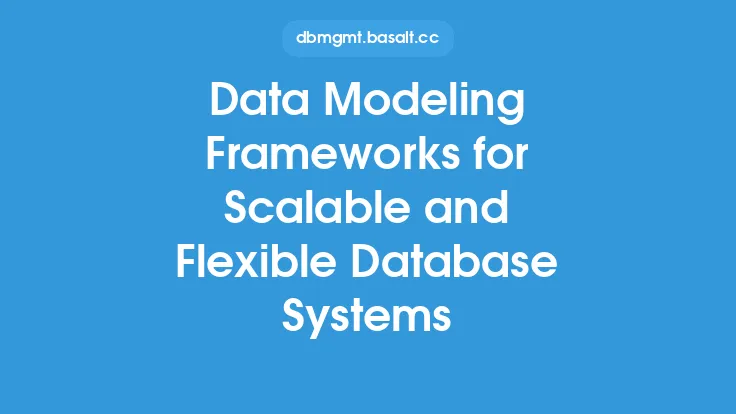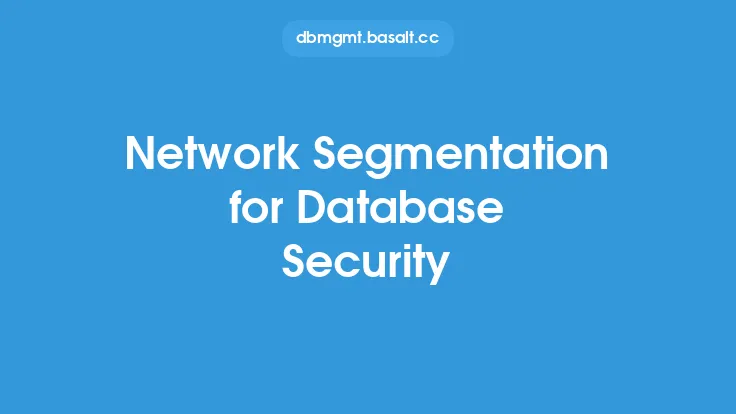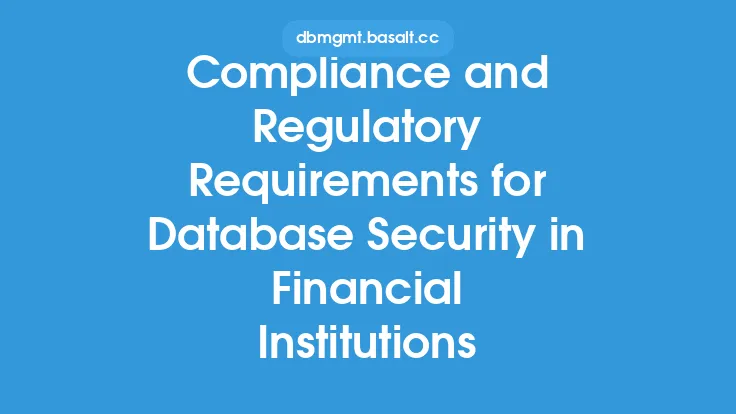In today's digital landscape, databases are the backbone of any organization, storing sensitive information that is crucial to business operations. As such, protecting these databases from unauthorized access and malicious activities is of paramount importance. One of the key components in achieving this protection is through the implementation of Intrusion Detection and Prevention Systems (IDPS) specifically designed for database networks. These systems play a critical role in identifying and mitigating potential threats, ensuring the integrity, confidentiality, and availability of database resources.
Introduction to IDPS
IDPS are network security systems that monitor and analyze network traffic for signs of unauthorized access or malicious activities. In the context of database networks, these systems are tailored to understand the specific protocols and behaviors associated with database communications. Unlike traditional security measures that focus on perimeter defense, IDPS for database networks are designed to detect and prevent intrusions that have bypassed the outer layers of security. This is achieved through a combination of signature-based detection, anomaly-based detection, and behavioral analysis, allowing for the identification of known threats as well as unknown or zero-day attacks.
Types of IDPS for Database Networks
There are primarily two types of IDPS: Network-based IDPS (NIDPS) and Host-based IDPS (HIDPS). NIDPS are installed at strategic points within the network to monitor traffic flowing through the network. They can detect attacks that are launched against multiple hosts, making them particularly effective in database environments where data is distributed across several servers. On the other hand, HIDPS are installed on individual hosts or servers, including database servers, to monitor system calls, application logs, and other host-based activities. This provides a more granular level of monitoring and can detect attacks that are specifically targeted at the database server.
How IDPS Work for Database Networks
The operation of IDPS in database networks involves several key steps. First, the system captures network traffic or host activities, depending on its type. This traffic is then analyzed against a database of known attack signatures or patterns. For signature-based detection, if a match is found, the system alerts the security team and may take preventive action such as blocking the traffic. Anomaly-based detection involves comparing the traffic patterns against a baseline of normal activity, flagging any deviations that could indicate a potential threat. Behavioral analysis takes a more proactive approach, identifying suspicious behavior that does not match known signatures or normal traffic patterns, which could indicate a zero-day exploit.
Benefits of IDPS for Database Security
The implementation of IDPS in database networks offers several benefits. Firstly, they provide an additional layer of security that complements traditional security measures such as firewalls and access controls. IDPS can detect and prevent sophisticated attacks that are designed to evade these traditional defenses. Secondly, IDPS can reduce the risk of data breaches by identifying and blocking malicious activities in real-time. This is particularly important for databases that store sensitive information such as financial data, personal identifiable information, or confidential business data. Finally, IDPS can help organizations comply with regulatory requirements by providing a robust security posture that can be audited and verified.
Challenges and Considerations
While IDPS are a powerful tool in securing database networks, there are several challenges and considerations that organizations must be aware of. One of the primary challenges is the potential for false positives, where legitimate traffic is mistakenly identified as malicious. This can lead to unnecessary downtime and disruption of database services. Another challenge is the complexity of configuring and managing IDPS, especially in large and distributed database environments. The system must be carefully tuned to the specific needs of the database network, requiring significant expertise and resources. Additionally, the performance impact of IDPS on database operations must be carefully evaluated to ensure that security measures do not compromise database performance.
Future of IDPS in Database Security
The future of IDPS in database security is closely tied to the evolving nature of cyber threats and the advancements in technology. As attackers become more sophisticated, IDPS must also evolve to detect and prevent new types of attacks. This includes the integration of artificial intelligence (AI) and machine learning (ML) technologies to improve the accuracy and speed of threat detection. Cloud-based IDPS solutions are also becoming more prevalent, offering scalability and flexibility for organizations with cloud-based database deployments. Furthermore, the convergence of IDPS with other security technologies such as Security Information and Event Management (SIEM) systems and threat intelligence platforms will provide a more comprehensive security posture for database networks.
Conclusion
Intrusion Detection and Prevention Systems are a critical component of database security, providing a proactive defense against cyber threats. By understanding how IDPS work, the benefits they offer, and the challenges associated with their implementation, organizations can better protect their database networks from unauthorized access and malicious activities. As the threat landscape continues to evolve, the role of IDPS in database security will become even more important, necessitating ongoing investment in these technologies to stay ahead of emerging threats. By integrating IDPS into their overall security strategy, organizations can ensure the confidentiality, integrity, and availability of their database resources, safeguarding their most valuable assets in the digital age.





